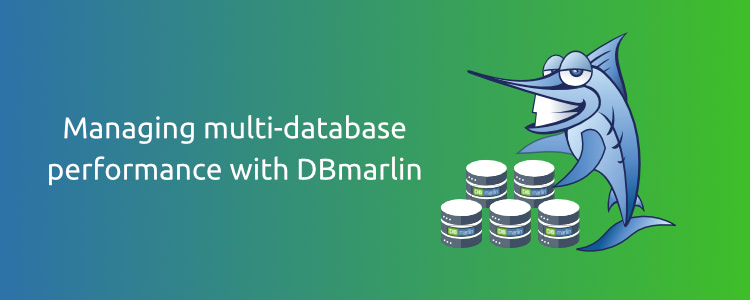Managing multi-database performance with DBmarlin

Managing database infrastructure is a delicate balance between performance, cost, and scalability. This blog post explores the complexities of multi-database performance and how DBmarlin can help manage and optimise this setup effectively.
The problem
In environments with numerous applications or services, each one may have its own database. While this approach protects against poorly optimised queries affecting multiple services, it results in substantial infrastructure costs. Consolidating these databases into fewer clusters, which are shared across multiple applications, could reduce the overall infrastructure costs but may face resistance due to concerns from application owners that their performance or scalability could be impacted by other applications outside their control.
Challenges of consolidation
Here are some of the challenges with consolidation and how you can overcome them.
Runaway queries:
- Explanation: A poorly optimised query can monopolise resources, causing performance degradation for all services on the same database instance or cluster.
- Solution: Implement a robust database monitoring and optimisation practices that can detect and optimise any expensive queries before they become a problem.
Resource contention:
- Explanation: Multiple services sharing the same resources can lead to contention, affecting performance.
- Solution: Using different schemas for the different application workloads can avoid contention such as locking but it is important to also ensure adequate resource allocation to avoid contention on hardware resources such as CPU and disk I/O.
Complexity in management:
- Explanation: Consolidating databases increases the complexity of backup, restore, and disaster recovery operations.
- Solution: Use advanced backup strategies and automation to streamline these processes.
Organisational resistance:
- Explanation: Teams may resist changes due to past experiences with performance issues.
- Solution: Start with a pilot project to demonstrate the benefits of consolidation.
Steps to successful consolidation
Here are some stops which will help get a successful result from a database consolidation project.
Pilot project:
- Approach: Begin with a small-scale consolidation involving non-critical applications.
- Benefit: Demonstrate feasibility and build confidence among stakeholders.
Resource allocation and monitoring:
- Approach: Use DBmarlin to monitor resource usage and performance metrics continuously.
- Benefit: Ensure that resource contention is minimised and performance remains stable.
Query optimization:
- Approach: Implement strict query optimisation and monitoring practices. Use tools like DBmarlin to identify and optimise poorly performing queries.
- Benefit: Prevent runaway queries from affecting overall performance.
Automated backups and restores:
- Approach: Automate backup and restore processes to handle multiple databases efficiently.
- Benefit: Simplify disaster recovery and ensure data integrity.
How DBmarlin can help
DBmarlin provides several features that can facilitate the management and optimisation of a consolidated database infrastructure:
Comprehensive monitoring:
- Feature: Monitor real-time performance metrics for queries, I/O operations, and resource utilisation.
- Benefit: Quickly identify and address performance bottlenecks.
Query analytics:
- Feature: Analyze query performance and identify poorly optimised queries.
- Benefit: Optimize queries to prevent them from degrading overall performance.
Automated alerts and recommendations:
- Feature: Set up alerts for performance anomalies and receive recommendations for optimisation.
- Benefit: Proactively manage performance issues and ensure optimal database performance.
Historical data analysis:
- Feature: Compare current performance with historical data to identify trends and patterns.
- Benefit: Validate the effectiveness of consolidation and optimisation efforts.
Conclusion
Consolidating multiple databases into fewer clusters can significantly reduce infrastructure costs while maintaining performance and reliability. By starting with a pilot project, implementing robust monitoring and optimisation practices, and leveraging DBmarlin’s powerful features, you can successfully manage and optimise a consolidated database infrastructure.

